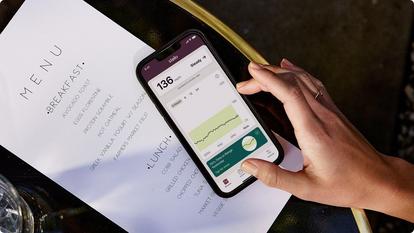Glucose basics
What should my glucose levels be? Target ranges explained
Published: Apr. 1, 2025
4 min read

The content in this article should not be taken as medical advice. Please consult with your healthcare provider regarding your individual health needs.
Glucose, your body’s main source of energy, comes from what you eat and drink and is influenced by factors like age, health, and lifestyle.
If you’re living with diabetes or prediabetes, keeping your blood glucose levels steady is especially important. Big swings on a frequent basis, whether too high (hyperglycemia) or too low (hypoglycemia), can lead to long-term complications like heart disease, nerve damage, and vision problems.

Understanding your glucose patterns
You’re probably wondering what your glucose levels should be and what typical ranges should look like. Before we talk about optimal glucose ranges, it’s important to understand how glucose levels fluctuate throughout the day. Two things to pay attention to are fasting glucose and post-meal glucose, which both offer valuable insight into your metabolic health.
Fasting glucose
Fasting glucose is a measure of your glucose levels after at least eight hours without food or drink (besides water). It’s a key indicator of how well your body manages glucose after an extended break from eating. Consistently elevated fasting glucose can signal insulin resistance or prediabetes, which are both early warning signs of more serious conditions like type 2 diabetes and heart disease.
Post-meal glucose
Several minutes after you eat, your glucose levels naturally rise as your body processes the carbohydrates. Some fluctuation is to be expected, but frequent sharp spikes and crashes can take a toll on your health. Over time, this pattern can make it harder for your body to regulate glucose, increasing the risk of insulin resistance, metabolic issues, and inflammation-linked chronic diseases.
By paying attention to both fasting and post-meal glucose, you can start spotting trends that may impact your energy, metabolism, sleep quality, and long-term health.
Glucose levels by the numbers
A recent study looked at glucose tracking data from 1,175 people—including those with diabetes, those with prediabetes, and those without diabetes—to better understand how blood glucose levels vary across different groups. Here’s the findings:
- People with diabetes spent 46.2% of their time in the 70–140 mg/dL range.
- People with prediabetes spent 77.1% of their time in the 70–140 mg/dL range.
- People without diabetes spent about 87% of their time in the 70–140 mg/dL range, with only 1.2% of their time above 180 mg/dL.
These numbers can serve as a helpful reference when looking at your own glucose data, but they don’t define an exact target for everyone.
What’s considered a typical glucose range?
For people with diabetes, glucose targets can vary depending on factors like age, pregnancy, and other health conditions. The American Diabetes Association suggests aiming for these ranges:
- Before meals: 80–130 mg/dL
- Post-meal: Below 180 mg/dL
In addition, people living with diabetes should aim to spend at least 70% of the time between 70–180 mg/dL.
For those without diabetes, there isn’t a universal consensus on the “perfect” or “normal” glucose range. However, here are some suggestions for what’s considered typical:
- Fasting glucose: The target range is 70–99 mg/dL
- Post-meal glucose: Often stays below 140 mg/dL after eating.

Why glucose tracking matters
Glucose isn’t just about diabetes; it’s tied to everything from food and exercise to stress and sleep. Glucose biosensors like Stelo help you visualize trends, making it easier to connect the dots between your daily choices and your glucose health. While research on optimal glucose levels is still evolving, stable glucose is widely recognized as a key marker of overall well-being.
Staying in-the-know about your glucose levels gives you the key to unlock hidden trends that impact energy, metabolism, and long-term well-being. With clear, personalized insights, you can fine-tune your habits to make healthier food choices, optimize physical activity, decrease stress, and improve sleep. It’s all about feeling your very best, every single day.

Curated & reviewed by: Kayce Sol
MA, RN, BSN, CDCES
MA, RN, BSN, CDCES
Kayce Sol is a registered nurse and certified diabetes care and education specialist.
